The environment is a hot topic in the world. People are becoming more environmentally conscious day by day. So, sustainable fashion has become important in recent times. Significant changes are seen occurring in the global fashion industry. The idea of sustainable and ethical fashion has become a business essential. Consumer desires for eco-friendly and sustainably produced clothing.
The definition of sustainable fashion and its importance are described here. Examples and ways are narrated here to support this transformative movement. You should understand and embrace sustainable fashion. Later, you may contribute to this field.
What is sustainable fashion?
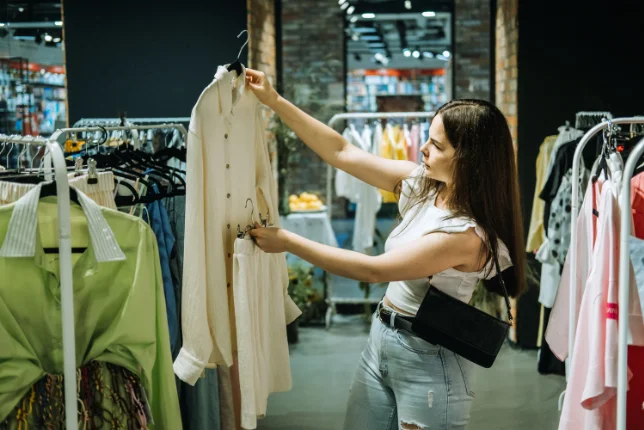
The fashion brands that put priority on both green environment and ethical fabrication practices are included in sustainable fashion. It is a conscious approach to fashion. The impact of clothes on the planet and the well-being of garment employees are widely considered in the case of sustainable fashion. Sustainable fashion means clothes that sustain for a long time in the environment. The concept may seem straightforward. However, adopting sustainable practices often increases costs and reduces the brand’s profit margin. To embrace sustainability, the fashion industry must be truly willing to invest more in their purchases to support this shift in consumers. Moreover, the fashion industry may boycott the brands that pay no attention to environmental concerns.
Examples of sustainable practices
Here are some options and examples of sustainable fashion
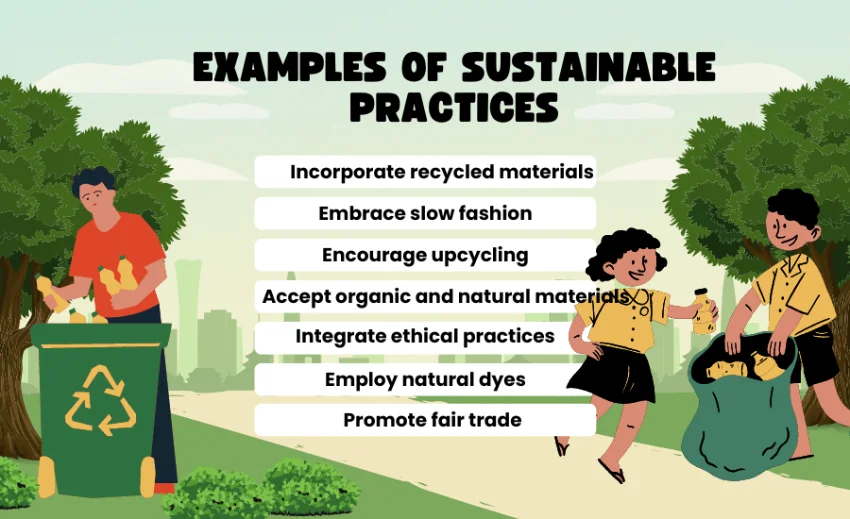
- Incorporate recycled materials
The recycled materials derived from waste products are revolved as part of the practice of sustainable fashion. Otherwise, landfills will grasp the eco-friendly style. Recycled plastic is an element of sustainable clothes. Reusing materials is a safeguard of natural resources. They reduce wastage.
- Embrace slow fashion
Slow fashion embodies a clothing design and production method. It emphasizes quality over quantity. It aims to create timeless and durable clothing. It can be enjoyed for an extended period in contrast to the disposable nature of fast fashion. Slow fashion reduces waste. It encourages conscious consumption with a focus on versatility.
- Encourage upcycling
The key aspect of sustainable fashion is to promote upcycling. Sustainable fashion converts existing materials into new products. It discourages discarding the materials. Upcycling reduces waste. It recovers and revitalizes materials, encouraging creativity and innovation within the industry.
- Accept organic and natural materials
Sustainable fashion puts stress on using organic fabrics, such as cotton and linen. They are produced sans detrimental pesticides and chemicals. Moreover, it prefers renewable and eco-friendly resources such as wool and linen.
- Integrate ethical practices
Ethical practices are deeply embedded in sustainability. These include responsible sourcing, transparent supply chains, and concerted efforts to reduce water and energy consumption. These practices aim to reduce the environmental impact of fashion production. Besides, ethical practices promote social responsibility. It works for the well-being of the planet and its inhabitants.
- Employ natural dyes
Sustainable fashion uses natural dyes. These come from plants and other natural resources. Non-toxic and biodegradable dyes are alternatives to synthetic dyes. These, however, are often not healthy for environs and human beings.
- Promote fair trade
Sustainable fashion actively supports and embraces ethical principles for fair trade practices within the industry. In addition, it helps promote sustainable manufacturing methods. It aims to reduce the environmental impact of fashion production. Sustainable fashion contributes to a more just and responsible fashion industry by supporting fair trade.
Relevant Post
Benefits of sustainable fashion
Sustainable fashion offers many benefits. It benefits both the environment and society. Compared to fast fashion, choosing sustainable fashion has several key advantages:
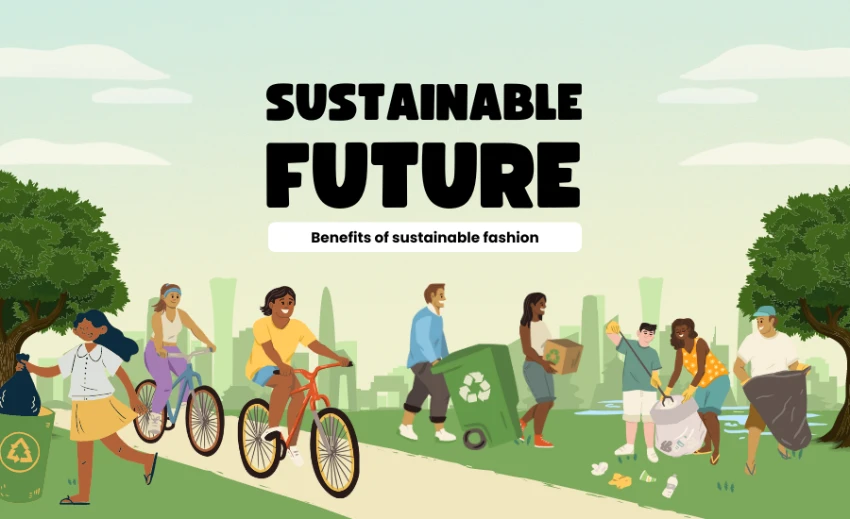
- Improved quality
By reducing the need for repeated replacements, sustainable fashion produces strong, high-quality clothing. It usually stresses plummeting the amount of clothing that ends up in landfills. It is one of the benefits of sustainable fashion.
- Environmental impact reduction
Sustainable fashion considerably decreases the environmental track of the fashion industry. It supports the use of natural and organic materials, renewable energy sources and liable manufacturing procedures. It diminishes industrial water pollution, waste and greenhouse gas emissions worldwide.
- Conservation of natural resources
Sustainable fashion preserves valuable resources such as energy, water and land. It supports the exercise of renewable, biodegradable and chemical-free materials.
- Cost savings
The initial cost of sustainable fashion can be high. However, its durability and longevity provide long-term cost savings as garments last longer, reducing the need for regular replacement.
- Positive social impact
Sustainable fashion puts stress on fair and safe working conditions for workers in the fashion industry. It ensures decent practices and better livelihoods for garment employees. Sustainable fashion urges designers to find new ways to make both sustainable and trendy clothing. This leads to originality and novelty in the fashion industry. This could lead to eco-friendly fashion trends.
- Support for ethical practices
Fashion brands can be supported by sustainable fashion for exercising ethical practices. Ethical practices might be promoted by consumers. They can establish fair labour practices and a safe working environment in the fashion industry.
- Support for local communities
Local resources are often used in a sustainable fashion. Besides, production techniques are also used in this case. Carbon emissions might be reduced in such a way. It greatly helps local economies by creating job opportunities for its community.
Trends of sustainable fashion

- Eco-friendly fashion
We see the rise of eco-friendly style in the fashion industry. A good number of companies are now doing sustainable practices. They are now utilizing eco-friendly, biodegradable and natural fibres instead of plastic. Organic cotton, mushroom leather, and hemp are now being used in the sustainable fashion industry. These are called sustainable alternatives. They are now helping industries to decrease their dependence on non-biodegradable materials. It moves the way to green fashion.
- Ethical fashion
Workers may get benefits for using ethical fashion in the apparel industry. Child labour might be restricted and equal gender rights might be ensured. Ethical fashion may create a safe working environment. It can also ensure fair wages. Other aspects of social justice are also addressed in this case. The fashion industry can create a more inclusive and unbiased atmosphere for all individuals involved here.
- Slow fashion
Slow fashion takes a lasting outlook. It considers the whole life cycle of manufactured goods. The fast fashion model does not do it. Sharing or renting clothes is exercised here. Slow fashion prioritizes the quality of clothes. The move extends their lifespan and reduces buying trends. Persons can decrease waste by taking up slow fashion. They can support a more sustainable and watchful move toward exercising.
- Conscious fashion
It works as a powerful memo to consumers. Conscious fashion calls upon them to recognize eco-friendly goods. It eagerly maintains the green fashion movement. It aims to educate and motivate people to make conscious purchase choices. It highlights sustainability and ecological responsibility. It builds conscious style choices among clients. So, users play a crucial role in bringing about positive change in the fashion industry. They make a more sustainable potential for both the world and future generations.
- Circular fashion
Circular fashion revolves around “closed-loop” procedures and manufacturing tips. It recovers waste materials and repurposes them for additional use in the fashion-style business. A diversity of circular fashion innovations survive. But, at present the most popular way is polyester.
Relevant Post
Myth of sustainable fashion
Some examples are cited below to illustrate the fable of sustainable fashion:
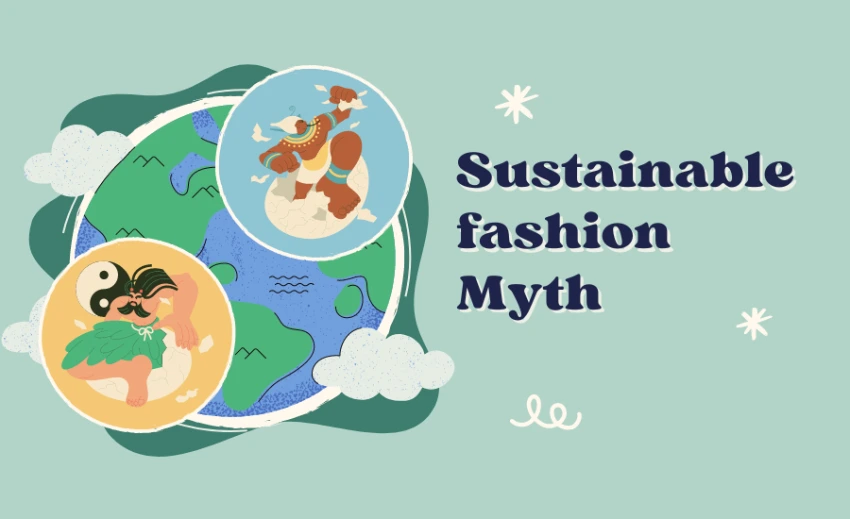
- Overconsumption and fast fashion
Fast fashion opposes sustainability. It makes brands fast make low-priced, fashionable attires. It endorses a non-refundable fashion tradition. This results in extra expenses and augmented wastage. Sustainability initiatives are taken by some fast fashion brands. High-volume, low-quality fabrication models obstruct their exact sustainability.
- Greenwashing
Greenwashing is used by some brands. Indistinct terms like “eco-friendly” or “green” are used without plain info. Consumers are misled. And they think that they are making sustainable choices.
- Supply chain complexity
It is not easy to gain sustainability in fashion. International supply chains are multifarious. Moral sourcing, fair wages and a safe working environment are followed by sustainable fashion brands. However, it might be difficult to ensure straightforwardness across the whole supply chain with many suppliers and subcontractors.
- Environmental impact of production
Even sustainable fashion brands with eco-friendly exercises can face environmental penalties during production. Energy use, water use, transport system give the fashion industry’s overall carbon footstep and climate change. Accurate sustainability wants a wide-ranging approach. It lowers the environmental impact at each output phase. The issues underscore the complexities and challenges linked with sustainable fashion. An intensive endeavour is required to overcome the challenges and force true change in the industry.
- Restricted convenience and affordability
Sometimes, high price tags are used for sustainable fashion. So it is not affordable to all. Many consumers are kept aside for this. . Financial disparity hinders the use of large volumes of sustainable fashion. Proper efforts must be made to cut these barricades.
- Fast fashion and sustainable fashion
Fast fashion means low-priced clothing. It is linked with the newest trends. It has created a revolution in the garment industry. However, the results of this quick and throwaway approach are becoming progressively clearer. A passing tradition has emerged. Consumers are hasty to throw away outfits instead of recycling or offering them to others. This action puts heavy stress on the surroundings, and it contributes to rising concerns in sustainability.
It is noted that fast fashion has bad effects. Consequently, sustainable fashion has come out as a realistic solution. It includes a holistic shift toward fashion fabrication, delivery, and use. It puts significance on environment-friendly practices and mutual accountability. By adopting sustainable fashion, we can ease the unresponsive results of the fashion industry. We can help drop waste. In addition, we can develop the use of clothing.
How consumers can help sustainable fashion
This is a great role of consumers to attain sustainable fashion. They can force the fashion industry to apply more sustainable practices. Moreover, they can contribute in many ways to curtail waste by maintaining clothing care and dumping.
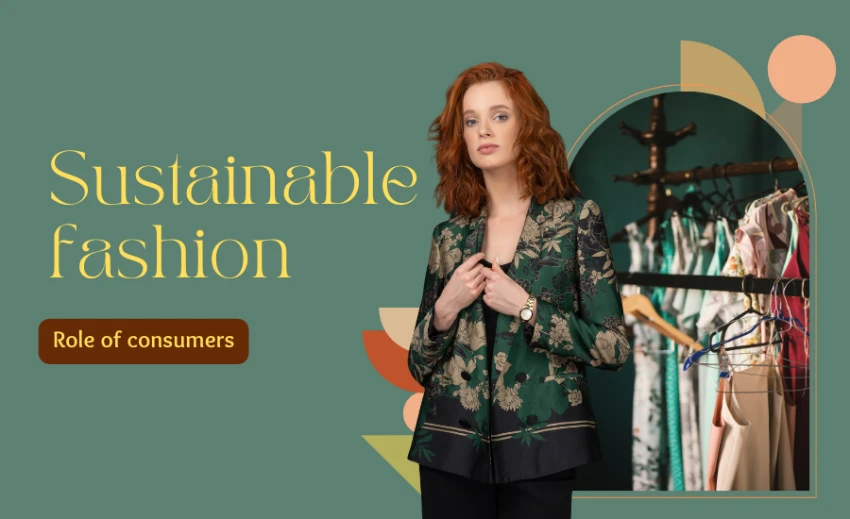
You may consider the following tips to go green;
- Select sustainable brands with transparent supply chains
You can help brands that focus on sustainability. Brands that have transparent production processes might be helped. You may get certificates from organizations – Soil Association, Fair Wear Foundation, Fairtrade Foundation, and Global Organic Textiles Standard.
- Shop for quality
You should learn about long-lasting higher-quality clothing. Then you may invest in it. In this case, the true rate may be higher. However, these things will slash the requirement for standard replacements.
- Opt for natural, organic fibres
You should choose natural and organic fibres for sustainable fashion. So, clothes made from eco-friendly materials might be your choosing options. Organic cotton, linen, or hemp have lower environmental impacts than synthetic fibres.
- Purchase as per your need only
You should keep away from reckless purchases. Put stress on those items that are urgently needed for you. In such a way, unnecessary consumption might be avoided.
- Explore secondhand and traditional options
To reduce cost and consumption, you may shop at secondhand stores, delivery shops, or online platforms. You may also use social platforms to sell your unwanted clothes. In this case, you may utilise Poshmark, ThredUp, THERealReal and so many other platforms. It is another sustainable choice.
- Put on clothes for a long time
It is very important to take care of your clothes accurately. You should not wash your clothes frequently. You should repair it instead of buying new clothes.
- Sustainable fashion jobs
There are many options if you are interested in a career in fashion with a sustainability component, as sustainable fashion jobs nowadays are in high demand. You can earn 12 most popular Sustainable fashion jobs.
They are sustainability intern, fashion designers, sustainable product developers, sustainable textile specialists, sustainable sourcing managers, sustainable supply chain managers, sustainable buyers or merchandisers, sustainability managers, corporate social responsibility (CSR) managers, sustainability PR managers, sustainability marketing managers, and sustainable fashion writers.
Final Words
It is a vital issue to make fashion sustainable. Businesses should be mindful of sustainable fashion considering the environment. They can make a healthy environment following all the sustainable issues. In this regard, every small step might be followed. It makes the environment clean, green, and healthy. Fashion makers can create a sustainable future for the planet. They can opt for natural and organic materials to minimize waste. Last but not least, consumers have a great role in supporting sustainable fashion for a healthy, sound environment. They can encourage eco-friendly brands by investing in quality lasting products.

